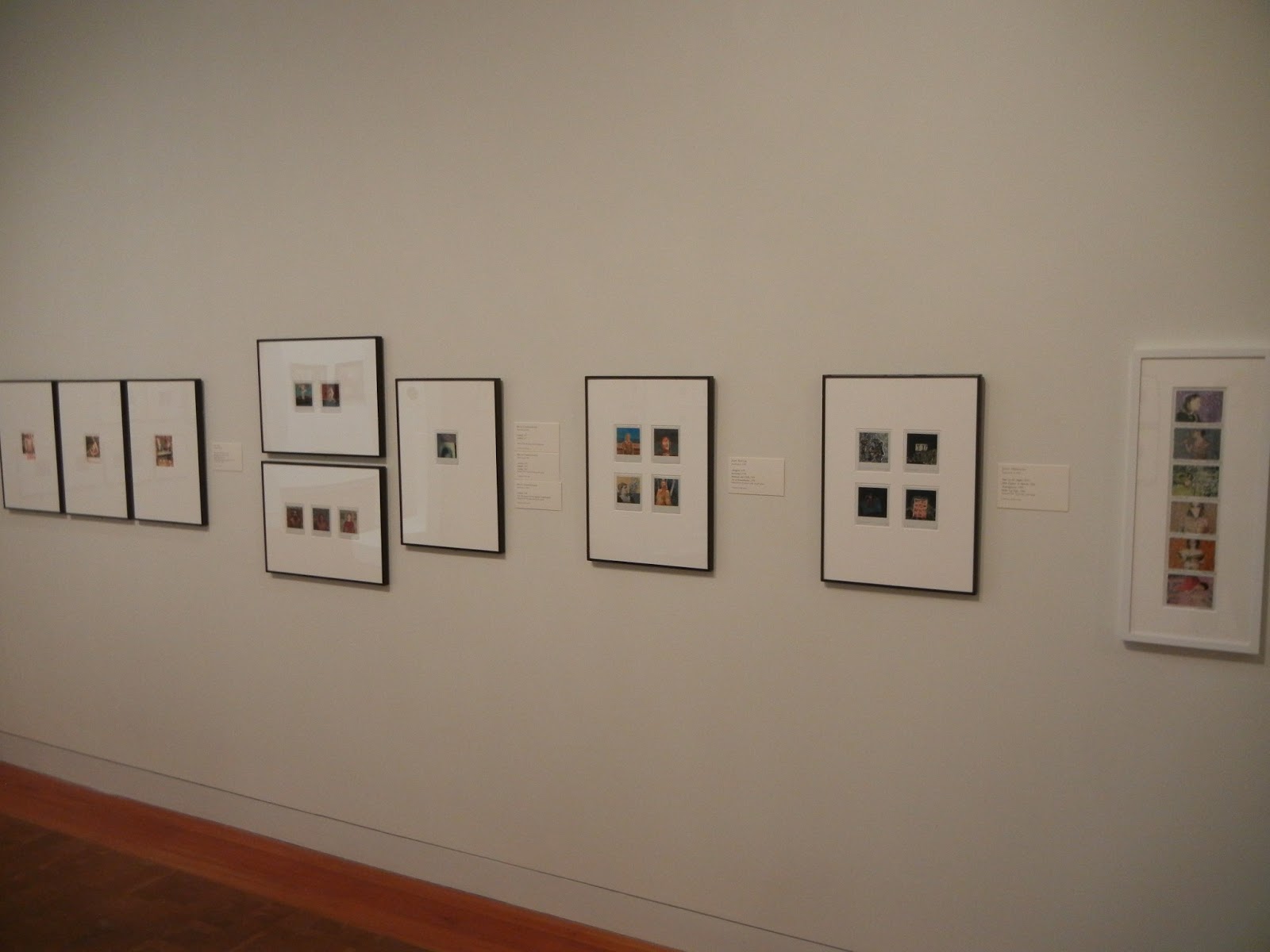 JTF (just the facts): A group show containing 14 photographic works by 9 different artists/photographers, variously framed and matted, and hung against white walls in the single room gallery space. All of the works are unique. (Installation shots at right.)
JTF (just the facts): A group show containing 14 photographic works by 9 different artists/photographers, variously framed and matted, and hung against white walls in the single room gallery space. All of the works are unique. (Installation shots at right.)The following artists/photographers have been included in the show, with the number of works on display and print details as background:
- Matthew Brandt: 1 chromogenic print soaked in Silver Lake water, 30x40, 2010
- John Chiara: 1 Ilfachrome print, 34x28, 2012
- Pierre Cordier & Gundi Falk: 2 chemigrams on paper, 20x20, 2011
- Agnes Eperjesi: 3 color photograms, 10x20, 2011
- Curtis Mann: 1 bleached chromogenic print, 30x40, 2011
- Klea McKenna: 2 photograms on gelatin silver fiber paper, 24x20, 2013
- Amanda Means: 2 developer on Ilford matte gelatin silver fiber paper prints, 24x20, 2005
- Floris Neusüss: 2 gelatin silver prints, 88x42 and 25x21, 1987, 1991
Comments/Context: The oxymoron of photographic uniqueness has always offered a set of specific challenges for photographers, forcing them to examine the very nature of the image making process itself. While inherent reproducibility may be the hallmark of most forms of the medium, artists have continually wanted to introduce hand crafted gestures, elements of chance, and original marks to photographs, undermining the usual multiplication and creating one of a kind artworks. This group show provides a recent sampler of this impulse, matching contemporary lines of thinking with a few representatives from the prior generation.
 John Chiara, Curtis Mann, and Matthew Brandt all start with photographs that are recognizably representational (blue skies, trees, lakes, and other landscape elements are readily identifiable), but each quickly moves off from standard documentation into areas of improvisation. Chiara uses a custom made camera obscura, multiple exposures, and uneven cut paper to pile image atop image. Mann adds tiny dots of bleach in a large round circle, creating a transparent scrim like a light flare. And Brandt dips his image in the lake water it depicts, allowing the color chemistry to break down into unexpected abstract swirls.
John Chiara, Curtis Mann, and Matthew Brandt all start with photographs that are recognizably representational (blue skies, trees, lakes, and other landscape elements are readily identifiable), but each quickly moves off from standard documentation into areas of improvisation. Chiara uses a custom made camera obscura, multiple exposures, and uneven cut paper to pile image atop image. Mann adds tiny dots of bleach in a large round circle, creating a transparent scrim like a light flare. And Brandt dips his image in the lake water it depicts, allowing the color chemistry to break down into unexpected abstract swirls.
Other artists forego the use of a camera, either heading into the darkroom to make photograms or playing with light sensitive paper in more uncontrolled environments. Floris Neusüss provides the baseline for traditional photogram work, mixing positive and negative silhouettes of bodies and greenery (often with added solarization) into complicated, overlapped abstractions. Agnes Eperjesi offers a contemporary foil to these works, with her photograms of newspapers, hands, flowers, and other random objects, all bathed in washes of drifting color. Klea McKenna's photograms of raindrops are a process mystery; how she captured the literally thousands of individual drops with such amazing clarity (some like circles, others like bursts of flame) is a fascinating puzzle.
The remaining artists in the show take these ideas to their ultimate photographic limit, effectively drawing with developer on light sensitive paper. The chemigrams of Pierre Cordier and Gundi Falk are astonishingly intricate, with grids of squares and rectangles covered in concentric light brown polygons; there is a connection here to Chuck Close's approach to painting his individual grid elements, but Cordier and Falk's process is even more strict and controlled, except when the lines melt into tiny blobs and pools. Amanda Means takes a more fluid approach, allowing the developer to wash across her cut grid, creating fingers of color like the gullies of a dry river bed.
All in, this is a well-edited gathering of unique works, mixing both known and unknown names. It successfully defines the essential challenge of uniqueness and points to the diversity of innovative approaches being used to upend the idea of the repeatable photograph.
- Matthew Brandt: $5000
- John Chiara: $6400
- Pierre Cordier & Gundi Falk: $21000 each
- Agnes Eperjesi: $3150 each
- Curtis Mann: $6700
- Klea McKenna: $2400 each
- Amanda Means: $4900 each
- Floris Neusüss: $23000 and $42000
Rating: * (one star) GOOD (rating system described here)
Transit Hub:
- Feature/Review: New Yorker (here)
- Matthew Brandt artist site (here)
- John Chiara artist site (here)
- Pierre Cordier artist site (here)
- Agnes Eperjesi artist site (here)
- Gundi Falk artist site (here)
- Curtis Mann artist site (here)
- Klea McKenna artist site (here)
- Amanda Means artist site (here)
Unique
Through July 12th
520 West 23rd Street
New York, NY 10011
















































